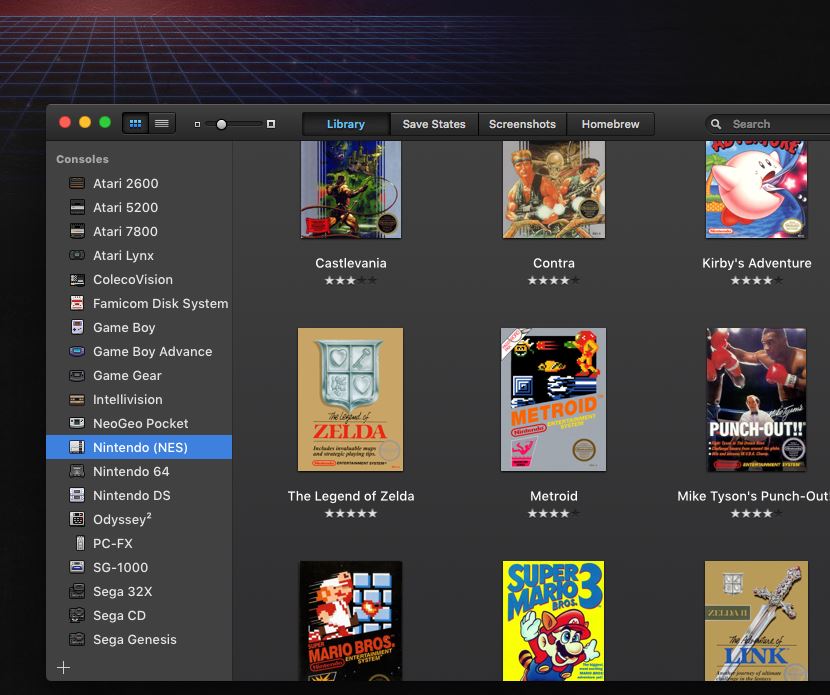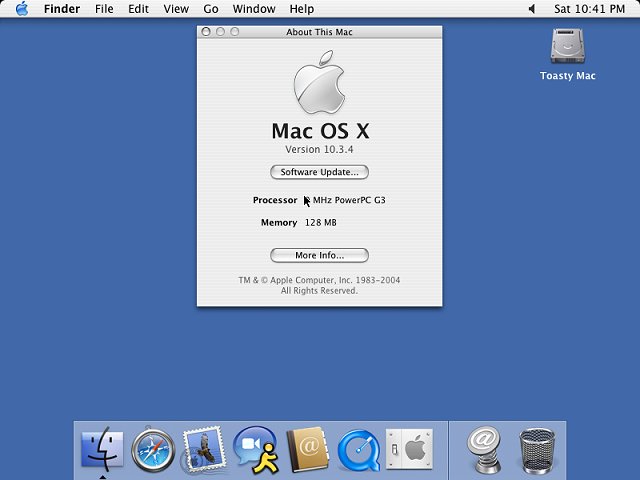These advanced steps are primarily for system administrators and others who are familiar with the command line. You don't need a bootable installer to upgrade macOS or reinstall macOS, but it can be useful when you want to install on multiple computers without downloading the installer each time.
Download macOS
Find the appropriate download link in the upgrade instructions for each macOS version:
macOS Catalina, macOS Mojave, ormacOS High Sierra
Installers for each of these macOS versions download directly to your Applications folder as an app named Install macOS Catalina, Install macOS Mojave, or Install macOS High Sierra. If the installer opens after downloading, quit it without continuing installation. Important: To get the correct installer, download from a Mac that is using macOS Sierra 10.12.5 or later, or El Capitan 10.11.6. Enterprise administrators, please download from Apple, not a locally hosted software-update server.
- Global Nav Open Menu Global Nav Close Menu; Apple; Shopping Bag +.
- Apple has released OS X Lion as a download from the Mac App Store only; however, you can use the download to create a separate OS installation disc or drive partition to use for troubleshooting.
- System Disk Utility 2.6.2 for Mac OS X Server 1.2 is a Mac OS program that allows you to select which hard disk your computer will start up from.
- Once your older Mac OS X CD or DVD is in your hand, set aside some time with Disk Utility and some blank CD-Rs, DVD-Rs, or, in the case of the Mac OS X 10.5 Leopard and Mac OS X 10.6 Snow Leopard.
OS X El Capitan
El Capitan downloads as a disk image. On a Mac that is compatible with El Capitan, open the disk image and run the installer within, named InstallMacOSX.pkg. It installs an app named Install OS X El Capitan into your Applications folder. You will create the bootable installer from this app, not from the disk image or .pkg installer.
Use the 'createinstallmedia' command in Terminal
Record Mac OS X launch and install on disk images and build a bootable USB stick by automatically generating and capturing the files in the suite. The program recognizes selected storage devices and selects drive volumes. The software library of Install Disk Creator 1.21 for Mac is free to download. This Mac download is safe, as demonstrated.
- Connect the USB flash drive or other volume that you're using for the bootable installer. Make sure that it has at least 12GB of available storage and is formatted as Mac OS Extended.
- Open Terminal, which is in the Utilities folder of your Applications folder.
- Type or paste one of the following commands in Terminal. These assume that the installer is still in your Applications folder, and MyVolume is the name of the USB flash drive or other volume you're using. If it has a different name, replace
MyVolumein these commands with the name of your volume.
Catalina:*
Mojave:*
High Sierra:*
El Capitan: - Press Return after typing the command.
- When prompted, type your administrator password and press Return again. Terminal doesn't show any characters as you type your password.
- When prompted, type
Yto confirm that you want to erase the volume, then press Return. Terminal shows the progress as the bootable installer is created. - When Terminal says that it's done, the volume will have the same name as the installer you downloaded, such as Install macOS Catalina. You can now quit Terminal and eject the volume.
* If your Mac is using macOS Sierra or earlier, include the --applicationpath argument, similar to the way this argument is used in the command for El Capitan.
Use the bootable installer
After creating the bootable installer, follow these steps to use it:
- Plug the bootable installer into a compatible Mac.
- Use Startup Manager or Startup Disk preferences to select the bootable installer as the startup disk, then start up from it. Your Mac will start up to macOS Recovery.
Learn about selecting a startup disk, including what to do if your Mac doesn't start up from it. - Choose your language, if prompted.
- A bootable installer doesn't download macOS from the Internet, but it does require the Internet to get information specific to your Mac model, such as firmware updates. If you need to connect to a Wi-Fi network, use the Wi-Fi menu in the menu bar.
- Select Install macOS (or Install OS X) from the Utilities window, then click Continue and follow the onscreen instructions.
Learn more

For more information about the createinstallmedia command and the arguments that you can use with it, make sure that the macOS installer is in your Applications folder, then enter this path in Terminal:
Catalina:
Mojave:
High Sierra:
El Capitan:
Mac Operating systems are definitely by far the best-operating systems in terms of features and reliability on those features. There are a lot of aspects that make these operating systems powerful. One very feature is the smooth transition while operating the system. now you can say that all systems have a limit, but the performance of these systems comparatively is very good and the creditability of the systems is on par. Apple released an operating system series called OS X. they started releasing a range of great operating systems, of which the Mac OS X tiger holds the record of being in use the longest.
With the release of the Mac OS X Tiger, the software industry felt threatened because of the high-end performance of the system. this boosted up sales and also brought fame to the line-up of the Mac OS X series of operating systems. With all this being said and done we need to discover the various aspects that made the operating system apart from the other line up of operating systems.
License
Official Installer

File Size
2.6GB
Language
English
Developer
Apple Inc.
Why Mac OS X tiger?
The tiger OS X had a lot of copies sold making apple much happier in terms of sales and taking them to the top during the release. Apple has regarded as the launch of the Mac OS X Tiger as one of the best-Operating systems launches in the history of the company. There are a lot of aspects that made the Mac OS X tiger stand out from the rest of the operating systems. The performance of the operating systems was so elite that the information processing of the data and the graphic processing of the system gave a tough competition to windows.
Windows had been struggling to enable the same graphic settings into their systems but apple did it effortlessly. The Mac OS X Tiger was one of the record-breaking operating systems that made the cut of making the line up of Mac OS X popular among Mac users. Now with improvements in online chatting as well the tiger made a remarkable mark with its release. The various features that apple pulled off with the Mac OS X Tiger are still yet to get adapted by its competitors.
Features of Mac OS X Tiger
Now that we know the widespread personality of the Mac OS X Tiger, its high time we know the features that set the Mac OS X Tiger apart from the rest of the operating system line-up.
- The new search system called spotlight search built-in to make your search much easier and more accessible.
- The dashboard was given a facelift from the dull and static interface to a more dynamic and interactive one. This improved the overall look and aesthetic appeal of the desktop.
- A unified theme that set the screen resolution apart and gave maximum performance to the output of the system.
- The support for addressing 64-bit on power mac G5s which was very much expected by the people who were avid users the Mac OS X line up.
- The first Mac OS to work on the Apple-Intel architecture processor.
- Grapher is a new graphing tool that will enable you to create 2-D and 3-D graph models like the graphing calculator existing in the previous versions.
- A new start-up Daemon will enable the system to boot much faster than usual called Launched.
- A full-time dictionary application is added based on the Oxford English dictionary is available with the update to the tiger OS.
- The iChat came along with the AV option that made the system much more easier and enabled the users to chat face to face.
- Mac Sync is one of the most improved and tweaked versions of the iSync versions of the Mac operating systems. They helped in enabling the syncing feature much more reliable and easier to use.
With all these aspects there is also some improvement in the overall haul of the system under heavy software and that’s what sets the operating system apart from the other line up of the operating systems.
Now that we are done with knowing the features of this incredible operating system from apples OS X line up, let’s get to know how to actually download the operating system and get hands-on experience on OS X tiger.
Download Mac OS X Tiger
You can download the operating system software file from https://isoriver.com/category/mac- os/mac-os-x-tiger-10-4/ and download the software file and reboot the system to actually boot the system again to get your hands on the Mac OS X Tiger and enjoy the experience.


The next line up from Mac OS X is on hold and apple is definitely taking it slow in making sure that the output of the systems much more efficient and improve the quality in terms of screen output and refinement.
The Mac OS X Tiger is by far the best OS that made the mark in the line up of OS X.
Download Mac OS X Tiger 10.4 ISO / DMG image directly - ISORIVER
Mac Operating systems are definitely by far the best-operating systems in terms of features and reliability on those features. There are a lot of aspects that make these operating systems powerful. One very feature is the smooth transition while operating the system.
Mac Os X Download
Price Currency: USD
Imac G5 Mac Os X Install Disc 1 Download
Operating System: Mac OS X Tiger
Mac Os X Install Disk 1 Download Windows 7
Application Category: OS
Comments are closed.